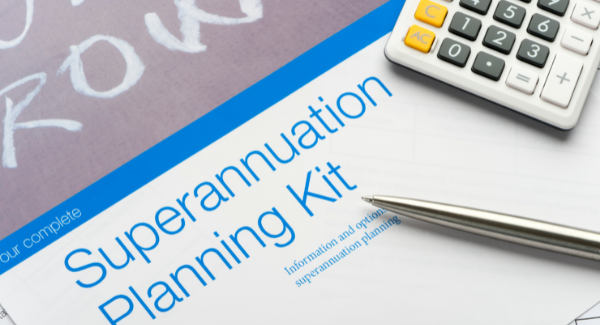Is the Superannuation Guarantee (SG) charge still increasing?
When the Federal Budget was handed down in May 2021, it contained measures to help business owners recover from the twin devastating impacts of the catastrophic 2019/20 bushfire season and the ongoing global pandemic.
However, in a timely move for employees, and despite increased pressure from some sections of the government, industry and the media, it also announced it will proceed with the Superannuation Guarantee increase every July from 2021 until July 2026. This means the Superannuation Guarantee, or Super Guarantee, rate will increase from the 9.5 percent, which it was proper to 1 July 2021, to 12 percent over the next five years.
With this in mind, we thought it the perfect time to chat about the Super Guarantee, why the Super Guarantee rates are increasing and everything in between.
What is Superannuation?
While we’re sure you know what super is, here’s a quick refresher. According to the Australian Taxation Office (ATO) is:
Super, or superannuation, is important because the more you save, the more money you will have in retirement. Super is a long-term investment which grows over time.
For most people, super begins when you start work and your employer starts paying a percentage of your salary or wages into a super fund account for you.
Your super fund invests and manages this money for you until you retire.
You can also choose to make extra contributions to your super yourself. It has tax implications so always discuss with your financial advisor first.
Why do we need Superannuation?
Introduced in 1992, the whole point of superannuation is to make retirees less dependent on the Aged Pension as their only source of income. This is another reason why it was legislated that employer super contributions be increased over time to 12 percent by 2025. In fact, employer superannuation contributions started at just 3 percent, gradually increasing to 9 percent between the years 1992 and 2002.
For more general info about growing and managing your super, head on over to the ATO website. To discuss more personalised ways to grow, protect and manage your wealth, contact one of our experienced advisors.
What is the Superannuation Guarantee?
The Super Guarantee, or SG, is the minimum amount of regular employer contribution to an employee’s super fund. Governed by the Superannuation Guarantee (Administration) Act 1992, your super contribution is linked to your salary or remuneration package and is paid on top of your salary.
From as far back as 1995, just a few years after super was first legislated, economists were warning that if contributions weren’t increased, future retiring employees wouldn’t have enough to comfortably support themselves. With the Boomer generation set to start leaving the workforce within the next few decades and a declining birth rate, economic disaster was looming.
Why is the Superannuation Guarantee being increased in stages?
In recent years, it’s been generally accepted that we need to start increasing the SG to meet the basic needs of retirees. Having said that, the rate has been frozen at 9.5 percent since 2014. Originally slated to reach the 12 percent mark by 2019, this year’s guaranteed increase from 9.5 percent to 10 percent was the first step to securing the financial future of the nation’s retirees.
The staged increase approach was designed to give businesses time to prepare for the future. It was decided that small increases each year would be easier for a business to meet rather than a one-time 2.5 percent increase.
Starting on July 1, 2021, employers were legally required to contribute 10 percent of your base salary, or ordinary time earnings, towards your superannuation. The table below shows how SG will increase a little each year until it reaches 12 percent in 2025.
|
Financial Year |
Super Guarantee Rate |
|
1 July 2021 – 30 June 2022 |
10% |
|
1 July 2022 – 30 June 2023 |
10.5% |
|
1 July 2023 – 30 June 2024 |
11% |
|
1 July 2024 – 30 June 2025 |
11.5% |
|
1 July 2025 – 30 June 2026 and beyond |
12% |
Will the Superannuation Guarantee increase this year?
Despite enormous pressures to delay the increase, the Morrison government confirmed in the May Federal Budget that the SG increases would proceed as planned.
Who is eligible for Superannuation Guarantee payments?
- It doesn’t matter if you work, full-time, part-time or casual, you’re eligible for SG payments.
- If you’re being paid more than $450 (before tax) in any calendar month by an employer, you must be paid super in addition to your wage.
- If you’re under 18 years of age, or your work is classified as private or domestic work, such as a nanny or housekeeper, you need to work for more than 30 hours a week to qualify for SG payments.
- Employees might have to pay some contractors, even if they quote an Australian Business Number (ABN)
However, it’s worth noting that from July 2022, this $450 per month minimum is set to be scrapped. What this means is that, even if you’re not earning $450 or more each month, you may still be eligible for super payments from your employer.
As we noted in our downloadable Federal Budget overview:
‘The Retirement Income review estimated that around 300,000 individuals would receive additional superannuation guarantee contributions each month with this measure and that 63 percent of these would be women’
Still not sure if you’re entitled to superannuation payments or what your obligations are as an employer? Check out the ATO online tool to get you started.
If you have any questions about how you or your business should be dealing with any changes to the Superannuation Guarantee increase, contact us to arrange to talk to a Client Director who will get you all sorted.
Share this
You May Also Like
These Related Stories

Super choice rules will change from 1 November 2021

New Year Business Planning: What we can learn from the challenges of 2020

/Brand/Logos/Kelly%20Partners%20Accountants%20Logo/Kelly-Partners-Accountants-Horizontal-Logo.webp?width=1500&height=212&name=Kelly-Partners-Accountants-Horizontal-Logo.webp)